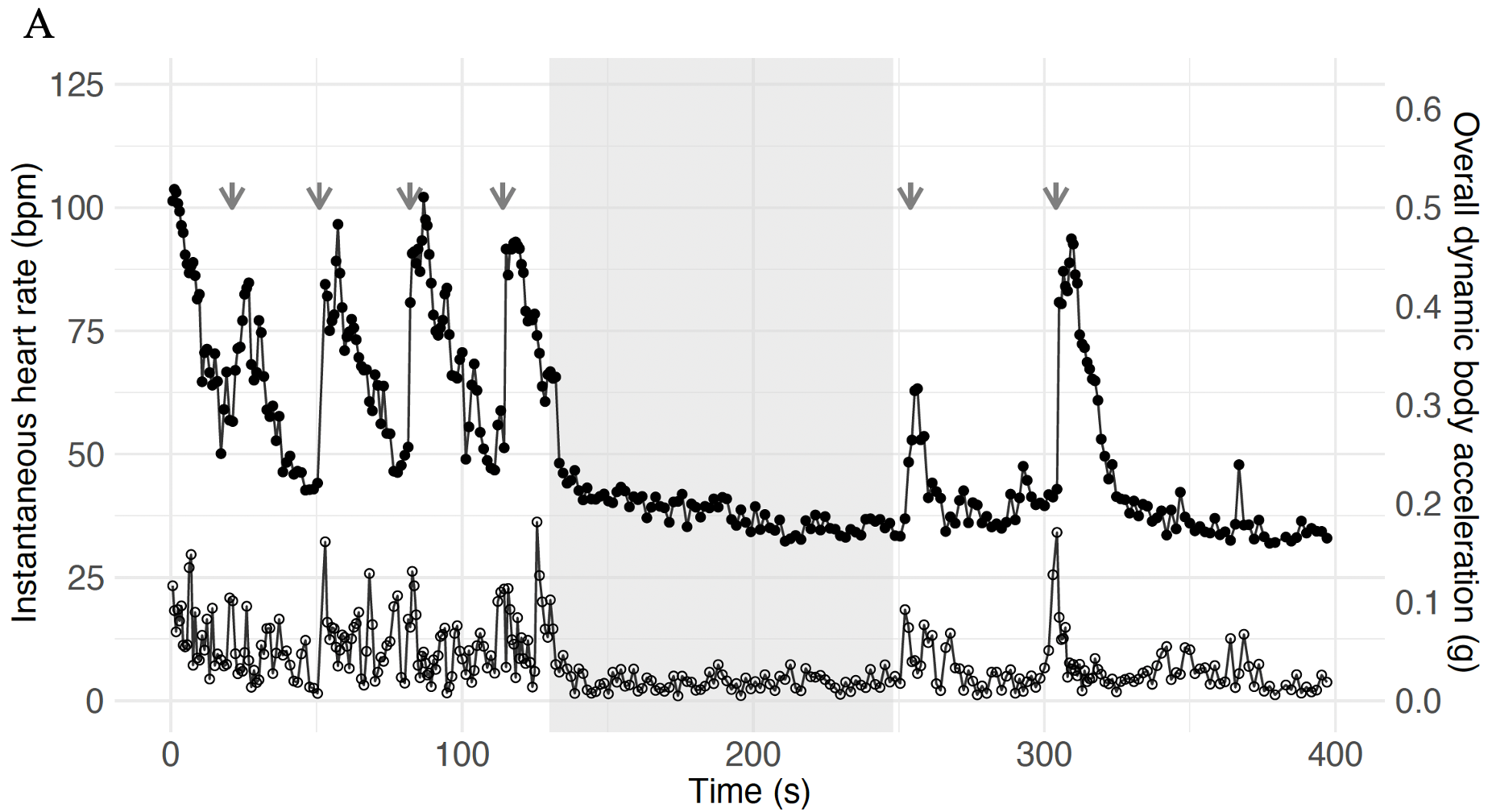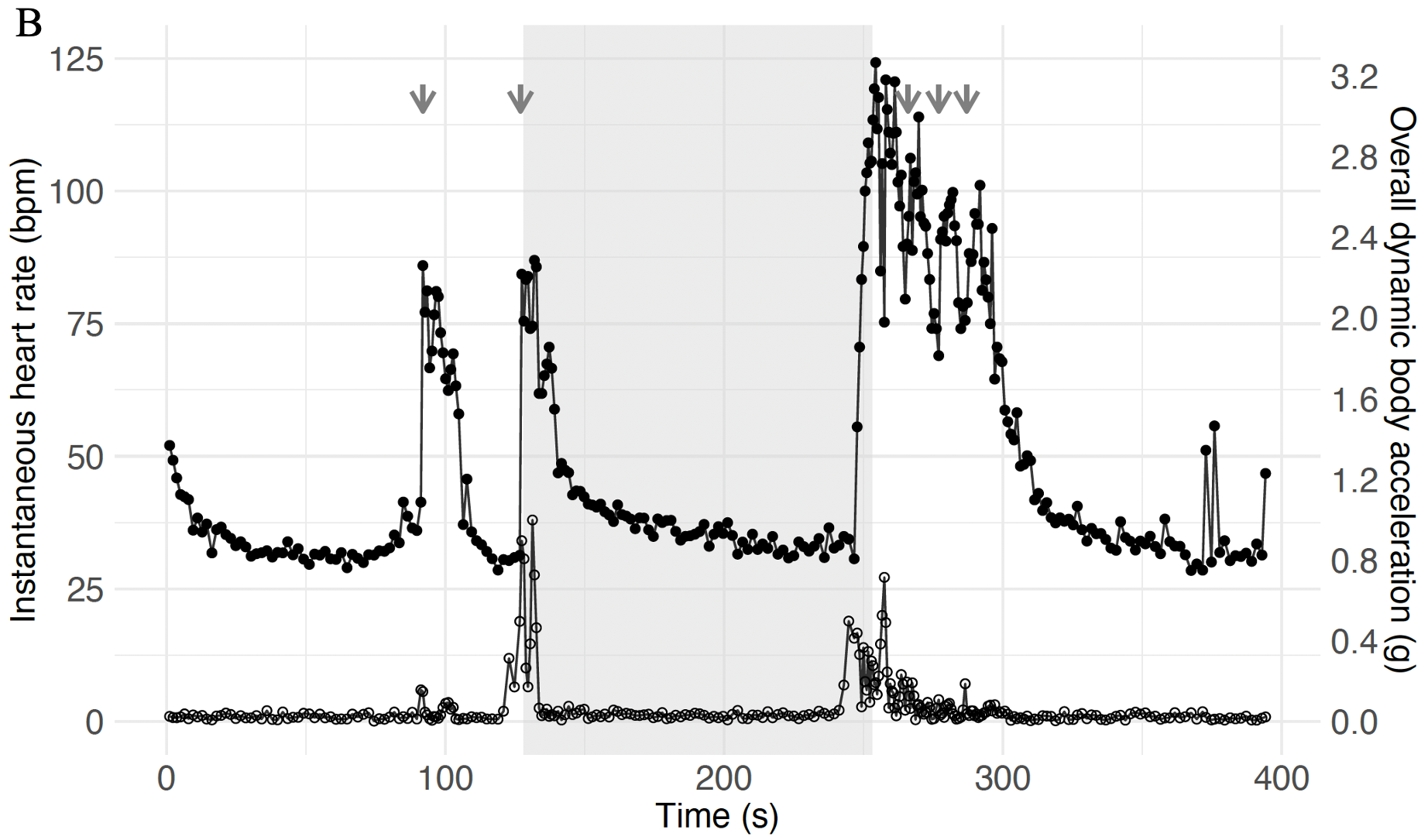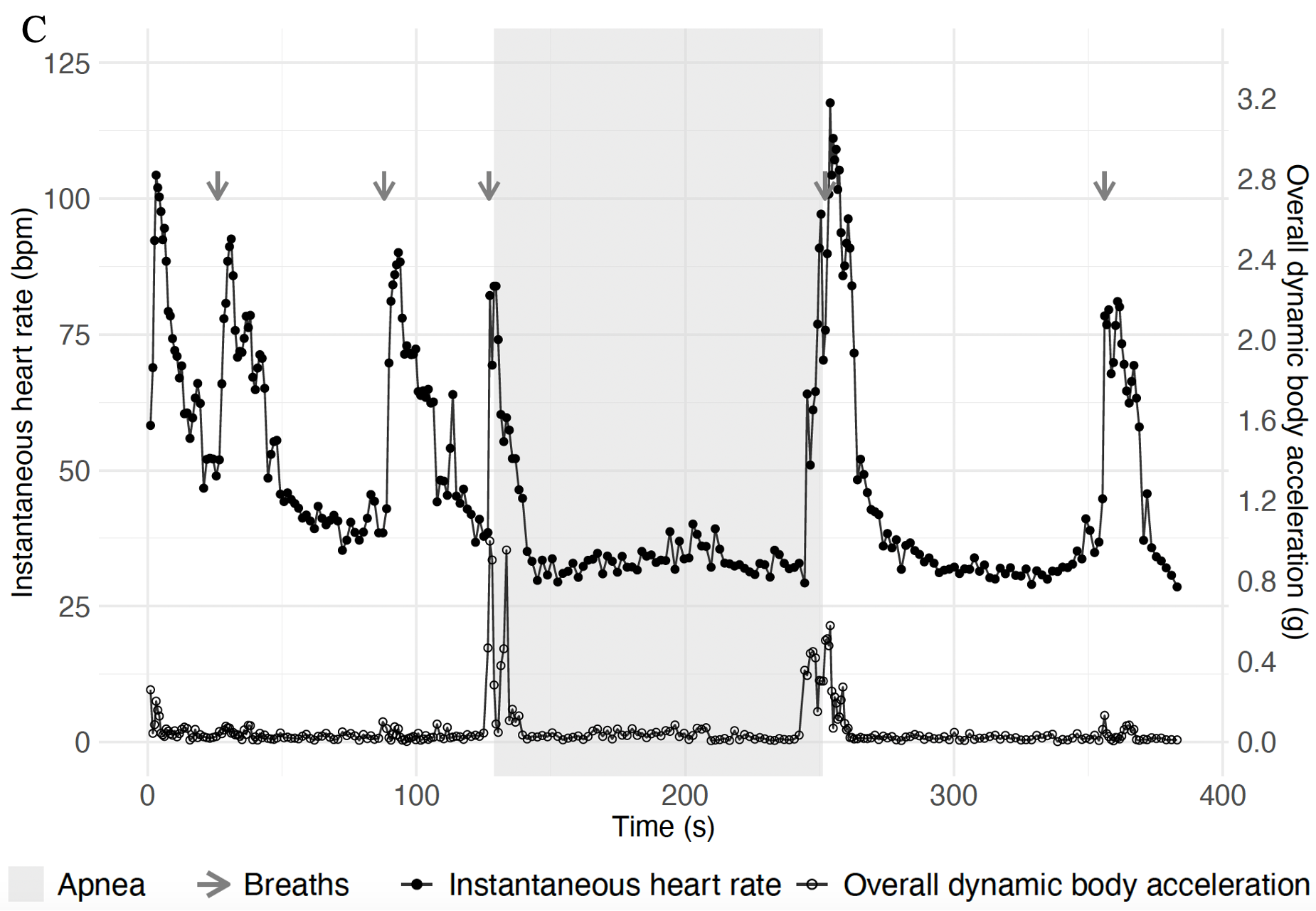A total of 126 trials were analyzed, with 42 trials conducted at each depth (0.5 m, 5 m, and 10 m).
Diving heart rate profile
The figures below illustrate representative traces of temporal changes in instantaneous heart rate and ODBA throughout 120 s trials at 0.5 (A), 5 (B), and 10 m (C), performed on the same day by the same dolphin.
During the pre-dive and post-dive periods, respiratory tachycardia was evident, being characterized by an increase in instantaneous heart rate during inspiration, followed by a return to baseline levels after expiration. Regardless of the dive depth, the instantaneous heart rate dropped immediately at the onset of apnea and quickly stabilized with minor fluctuations for the remainder of the apnea period. Likewise, ODBA remained consistently low during apnea at all three depths, with minimal movement due to adjustments required to maintain position.



Pre-diving physiological parameters
As the sequence of dive depths changed each day, the dolphins were not aware of the depth before a dive. Accordingly, pre-dive heart rate and breathing frequency were not significantly different across trials with different depths.

Diving physiological parameters
No significant changes in diving ODBA were observed across depths. In this study protocol, activity was eliminated as a factor that could influence cardiac output in order to isolate the direct effect of depth.

Influence of diving behaviour on diving heart rate
- Diving heart rate decreased with increasing dive depth, being significantly lower at 10 m compared to 0.5 m and 5 m;
- Higher breathing frequency before diving was associated with higher heart rate during the dive;
- Heart rate decreased with dive duration.
Influence of diving behaviour on diving HRV
- Diving CVRR decreased with increasing dive depth, being significantly lower at 10 m and 5 m compared to 0.5 m;
- Diving CVRR decreased with increasing dive duration;
- None of the physiological parameters included in these models significantly affected RMSSD during apnea.